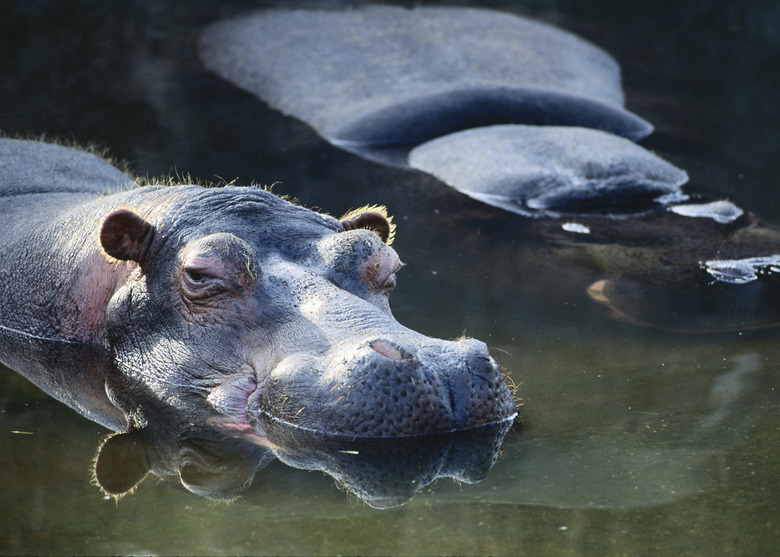In What Climate Does A Hippo Live?
Although they appear placid and almost cuddly lounging in the water, hippopotamuses are considered one of the most dangerous animals in Africa. These semi-aquatic mammals are highly territorial and will topple boats and run down humans who don't respect the animals' boundaries. Both species of hippo live in only specific climates and habitats. With climate change and human encroachment affecting hippo habitat, these formidable giants are at risk.
Hippopotamus Climate
Hippopotamus Climate
Although the range of hippos in the past spread across northern Africa and even into warmer areas of Europe, wild hippos today live only in sub-Saharan Africa. The areas where hippos dwell primarily have a tropical savannah climate, also known as a wet-dry tropical climate. This differs from a tropical rainforest in which precipitation levels remain the same year-round; hippos live in a climate with a dry and wet season. The wet season may last only three months, but more than 8 feet of rain can fall during this time. The temperatures in this climate are always hot, but there is a slight cooling period in the midst of the dry season.
Common Hippopotamus
Common Hippopotamus
The common hippo (Hippopotamus amphibius) range spreads along East Africa from Kenya to Mozambique and in West Africa from Sierra Leone to Nigeria. A thin band of hippo habitat spans the continent to connect these two ranges. Common hippos weigh over a ton and need to stay in water during the day to remain cool. They spend much of their days swimming, walking and wading in calm rivers and lakes. At night, they roam the land for their primary food source: grass.
Pygmy Hippopotamus
Pygmy Hippopotamus
The pygmy hippo (Hexaprotodon liberiensis) has a very small range covering only a small area in West Africa around Cote d'Ivoire. This area includes a wet-dry tropical climate but extends into the borders of rain forests. They prefer swampy areas and forest habitat. At one-fifth the size of a common hippo, the pygmy hippo needs to spend less time in the water to stay cool. The solitary animals forage at night for berries, ferns and other vegetation. It is estimated that only 2,000 to 3,000 pygmy hippos remain in the wild.
Cimate & Habitat Threats
Cimate & Habitat Threats
With climate change, weather and rain patterns shift. This can lead to more intense storms, longer dry periods and changes in an area's average temperature. If rivers or lakes dry up due to an extended dry season, all animals are left without drinking water, and hippos are in danger of overheating since they cannot sweat to cool down. Longer dry periods also mean less vegetation for hippos to eat and, in the case of pygmy hippos, to hide in. The biggest threat to hippos is human activity. The animals are hunted for sport, for their ivory, for meat and to clear them away from places humans want to live.
References
- Wildlife Conservation Society: Common Hippopotamus
- African Wildlife Foundation: Wildlife Hippopotamus
- Oregon Zoo: Hippopotamus
- Animal; David Burnie & Don Wilson (editors-in-chief)
- Blue Planet Biomes: World Climate
- San Diego Zoo: Mammals: Pygmy Hippopotamus
Cite This Article
MLA
Painter, Tammie. "In What Climate Does A Hippo Live?" sciencing.com, https://www.sciencing.com/climate-hippo-live-4841/. 24 April 2017.
APA
Painter, Tammie. (2017, April 24). In What Climate Does A Hippo Live?. sciencing.com. Retrieved from https://www.sciencing.com/climate-hippo-live-4841/
Chicago
Painter, Tammie. In What Climate Does A Hippo Live? last modified March 24, 2022. https://www.sciencing.com/climate-hippo-live-4841/
